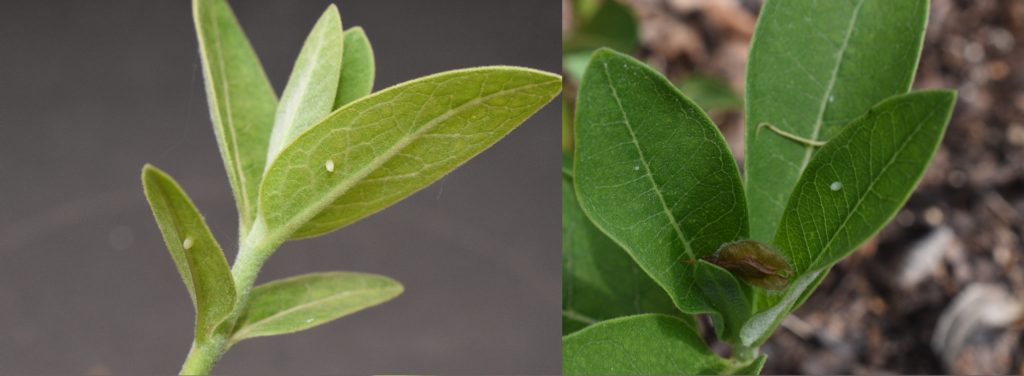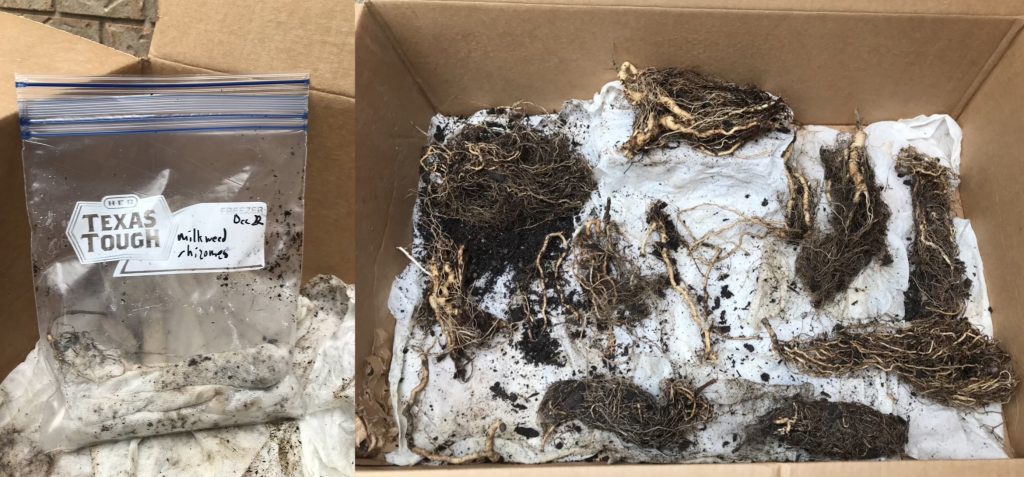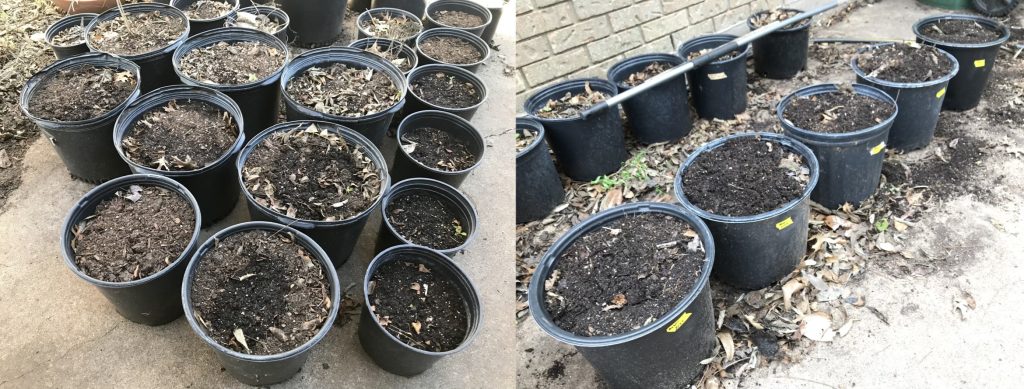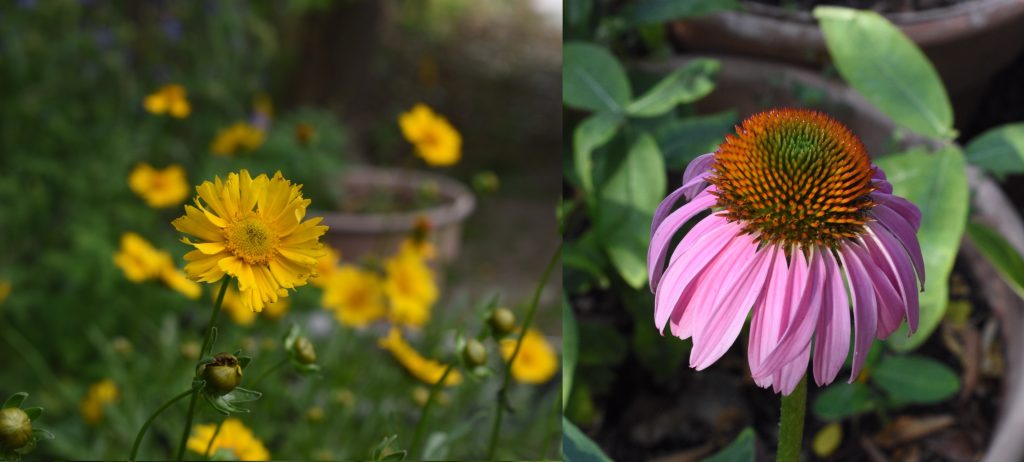On Saturday (March 25th), I saw my first monarch butterfly of the 2023 season. It was a washed-out looking female, indicating she had flown all the way from her overwintering spot in Mexico, not recently eclosed from a chrysalis. She flew around my garden for 40 minutes and laid at eggs on many plants. I found seven and there are likely more. In the next three days, I saw a monarch a day, including two more females laying eggs. As such, I could have caterpillars as soon as tomorrow (Wednesday, March 29). It usually takes 3–5 days for monarch eggs to hatch, with warmer temperatures leading to eggs hatching more quickly. I didn’t get a good picture of any of the adult butterflies, but I found and photographed several of their eggs.

Both pictures are of a monarch egg under the leaf of a common milkweed plant. The egg is the small white “bump” near the center of the pic.
Females almost always lay their eggs underneath one of the uppermost leaves on the plant. They hang on to the edge of the leaf and curl their abdomen underneath to deposit the egg. The uppermost leaves are the most tender and this may be the reason females prefer those. Or, maybe they are easier to navigate to. Reputedly, a female can lay up to 300 hundred eggs in her lifetime. I’ve seen some females lay around 20 eggs in my garden in a single visit.

Two monarch eggs laid on the same milkweed sprout (left). An unusual case of an egg being laid on top of a milkweed leaf.
So, my quest to raise 240 monarch this year in a garden in central Texas (USDA Zone 8B) is off to a great start. Follow this website to see how it goes.







Recent Comments